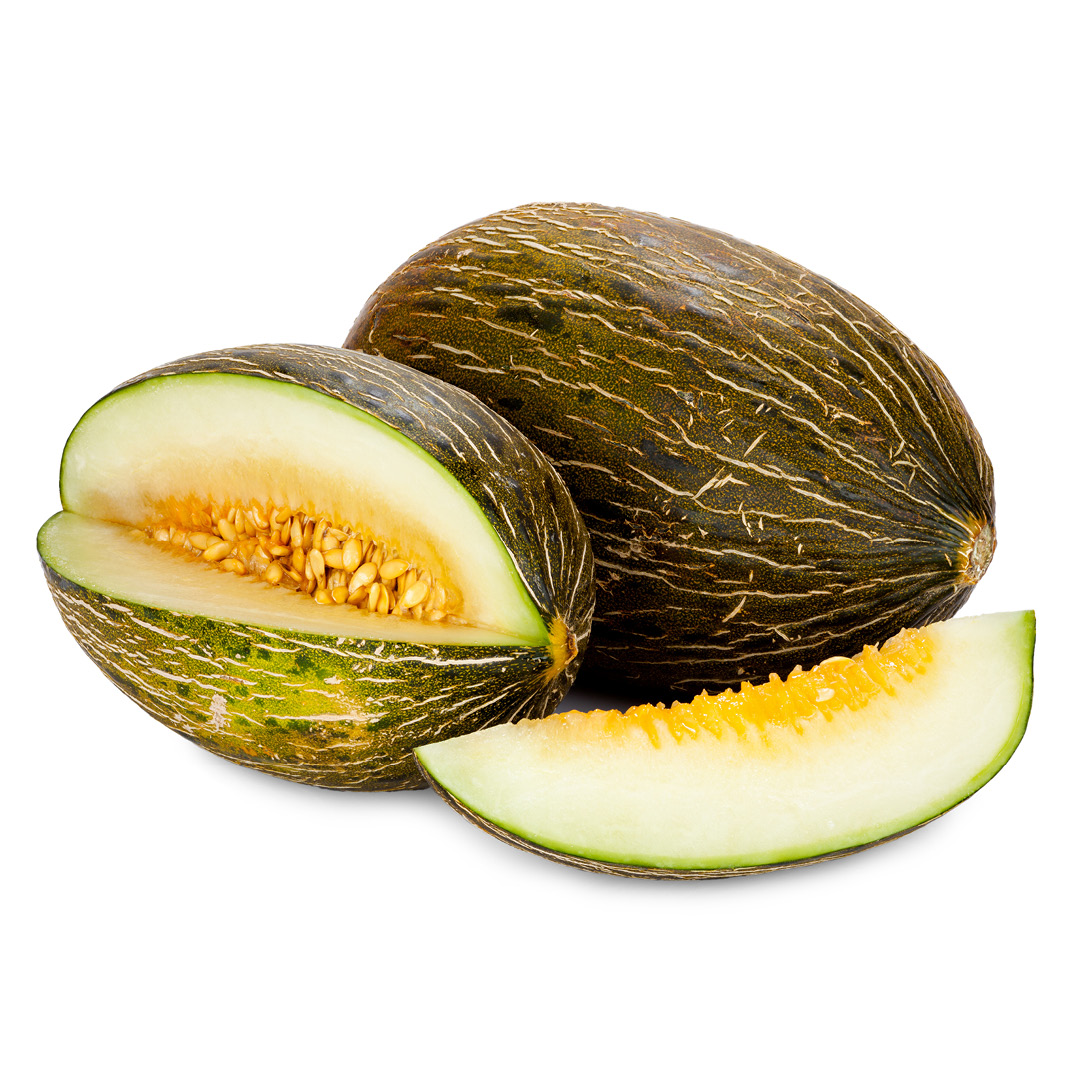All you need to know about Sapo melons

Green, stripy, a little bit ugly… don’t judge this melon by its skin. Inside its unassuming exterior is sweet, juicy, refreshing flesh that has to be tasted to be believed. Here’s all you need to know about Sapo melons.
Sapo melons are newcomers on the Tasmanian fruit scene. Originally from Spain, they are now grown in northern parts of Australia all year round.
What’s in a name?
The full name of the Sapo melon is Piel de Sapo, which means “frog skin” in Spanish – describing the rough green, stripy skin of the melon. Australian growers also call them “Croc-melons”. In the northern hemisphere they’re also known as Christmas or Santa Claus melons, due to their excellent storing ability which results from their tough ‘reptilian’ skin. If harvested and stored at the end of the northern hemisphere summer, they can last until Christmas.
How do they taste?
This melon is an oval shape similar to a small Aussie-rules football, with crisp, sweet, creamy-yellow flesh. They have been described as similar to a honeydew melon but sweeter, with notes of pear. They can be eaten cold in summer or room temperature in winter.
Storage
These thick-skinned melons can be kept at room temperature when whole, but once cut, should be kept in the fridge.

A low-calorie, nutritional fruit
With only 34 calories in 100g of fruit, and containing high levels of immunity-boosting Vitamin C, and phosphorous, which is essential to the body’s ability to filter waste and repair cells, the Sapo melon is a fruit you can eat as much of as you like, especially when you need a sweet fix. It also has a high water content and has a satiating effect on the appetite, as well as quenching your thirst.
How to use Sapo melon
Sapo melon can be used in all the ways you might use a rockmelon. The classic pairing of melon and serrano ham or prosciutto works just as well with sapo melon, so try this Italian Summer Salad, substituting the rockmelon for sapo melon. They are great on a platter like this one, as part of an entrée in this Whipped Ricotta Verrine, in a fruit salad, or to top a cake like this one. Of course, they are delicious simply enjoyed on their own.

